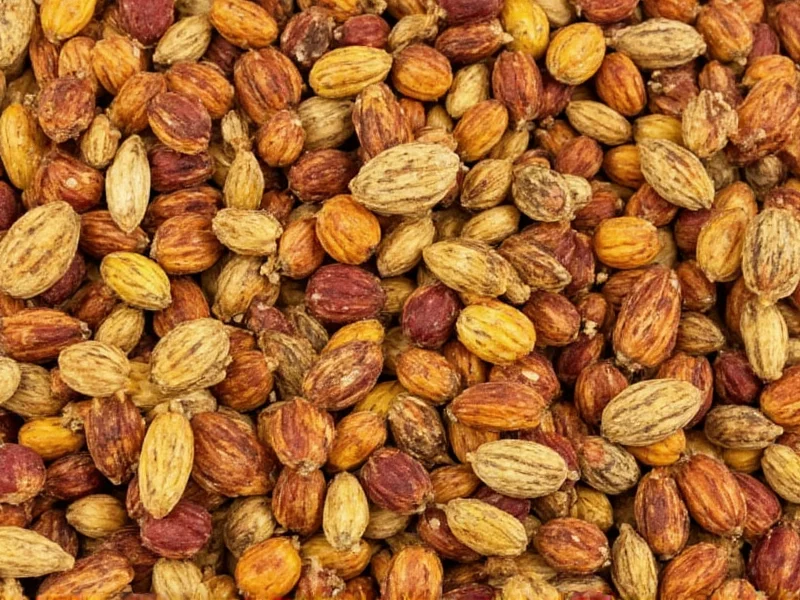When your recipe calls for dried savory but your spice rack comes up short, knowing the right substitute can save your dish. Dried savory (Satureja montana), a Mediterranean herb with distinctive peppery, pine-like notes, plays a crucial role in many traditional recipes, particularly bean dishes, stuffings, and meat preparations. Understanding what to use instead of dried savory ensures your culinary creations maintain their intended flavor complexity.
Understanding Savory's Unique Flavor Profile
Dried savory offers a complex flavor profile that's simultaneously peppery, slightly minty, and subtly pine-like. This distinctive combination makes it challenging to replace with a single herb. The best dried savory substitute depends on your specific recipe and what aspect of savory's flavor you need to replicate most accurately. Savory works particularly well in dishes where you want herbal notes without overwhelming the other ingredients.
Top Substitutes for Dried Savory
When searching for what to use instead of dried savory in recipes, consider these top alternatives based on flavor compatibility and culinary application:
| Substitute | Flavor Comparison | Best For | Conversion Ratio |
|---|---|---|---|
| Thyme | Slightly more earthy, less peppery | Bean dishes, stews, roasted meats | 1:1 |
| Marjoram | Sweeter, milder, less peppery | Stuffings, vegetable dishes, light sauces | 1:1 |
| Poultry Seasoning | Contains savory plus sage, thyme, rosemary | Poultry dishes, gravies, holiday recipes | ¾:1 |
| Thyme + Rosemary Blend | More robust, piney notes | Hearty stews, roasted meats, rustic dishes | ½ tsp thyme + ¼ tsp rosemary per tsp savory |
| Herbes de Provence | Contains savory plus lavender, thyme, oregano | Mediterranean dishes, grilled vegetables, fish | 1:1 |
How to Choose the Best Dried Savory Replacement
Selecting the ideal dried summer savory replacement requires considering your specific recipe. For bean dishes and lentil soups where savory traditionally shines, thyme provides the closest flavor match. When preparing poultry stuffing or holiday dishes, poultry seasoning offers the most authentic experience as it often contains actual savory along with complementary herbs.
For those seeking a dried savory herb substitute with similar intensity, remember that marjoram works well but requires slightly more quantity due to its milder flavor. When substituting dried herbs for fresh savory, maintain the standard 3:1 ratio (1 tablespoon fresh = 1 teaspoon dried).
Advanced Substitution Techniques
Professional chefs often create custom blends when looking for what to substitute for dried savory. Try these combinations for specific applications:
- For bean dishes: Combine equal parts thyme and a pinch of red pepper flakes to replicate savory's peppery kick
- For vegetarian cooking: Use marjoram with a touch of smoked paprika for depth
- For meat rubs: Blend thyme, rosemary, and a hint of sage for complexity
- For light sauces: Substitute with a combination of marjoram and a small amount of tarragon
Common Substitution Mistakes to Avoid
When exploring dried savory alternatives, avoid these common pitfalls:
- Using too much oregano, which has a stronger, more pungent flavor
- Substituting with basil, which has a completely different sweet profile
- Overusing rosemary, which can dominate other flavors
- Ignoring the dish's cooking time (delicate substitutes like marjoram are best added later in cooking)
Storage Tips for Savory Substitutes
Proper storage maintains the potency of your dried savory replacement options. Keep all dried herbs in airtight containers away from light and heat. Most dried herb substitutes retain optimal flavor for 6-12 months. To test potency, rub a small amount between your fingers—if the aroma is weak, it's time to replace your supply. Freezing dried herbs can extend their shelf life but may affect texture.
Creating Your Own Savory Blend
For those who frequently need a dried savory substitute, consider making your own blend:
- Mix 2 parts dried thyme
- Add 1 part dried marjoram
- Include ½ part dried rosemary (finely crushed)
- Add a pinch of red pepper flakes for peppery notes
- Store in an airtight container for up to 6 months
This versatile blend works as an excellent dried savory replacement in most recipes while providing consistent flavor. Adjust the ratios based on your personal taste preferences and specific recipe requirements.
FAQ: Dried Savory Substitutes
What is the closest substitute for dried savory?
Thyme is the closest single-herb substitute for dried savory, offering similar earthy, slightly peppery notes. Use in a 1:1 ratio for most recipes, particularly bean dishes and stews where savory traditionally shines.
Can I use poultry seasoning instead of dried savory?
Yes, poultry seasoning makes an excellent dried savory replacement as it typically contains savory along with complementary herbs like thyme, marjoram, and sage. Use ¾ teaspoon of poultry seasoning for every 1 teaspoon of dried savory required in your recipe.
How do I substitute fresh savory for dried?
When substituting fresh savory for dried, use a 3:1 ratio (3 parts fresh to 1 part dried). For example, if a recipe calls for 1 teaspoon dried savory, use 1 tablespoon fresh savory. Add fresh herbs later in the cooking process to preserve their delicate flavor.
What's the difference between summer and winter savory?
Summer savory has a milder, sweeter flavor while winter savory is more robust and peppery. Most recipes calling for "savory" refer to summer savory. When substituting, use thyme for winter savory recipes and marjoram for summer savory recipes for best results.
Can I use Italian seasoning instead of dried savory?
Italian seasoning can work as a dried savory substitute but requires adjustment. Since it contains stronger herbs like oregano and basil, use only ½ teaspoon of Italian seasoning for every 1 teaspoon of dried savory required, and consider adding extra thyme to balance the flavor profile.











 浙公网安备
33010002000092号
浙公网安备
33010002000092号 浙B2-20120091-4
浙B2-20120091-4